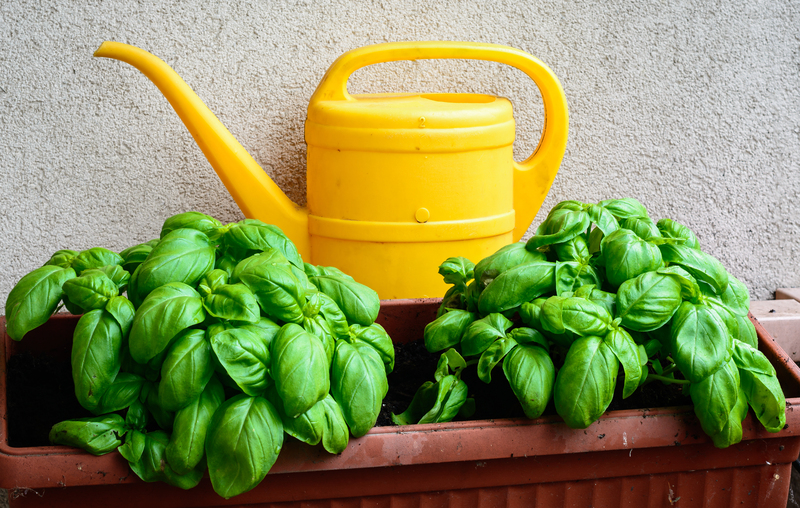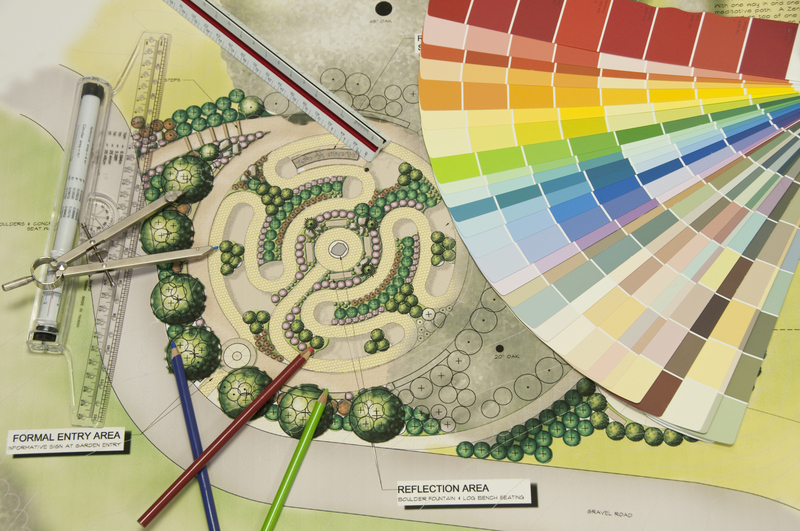Garden Spaces that Encourage Active Play for Kids
Posted on 21/09/2025
Garden Spaces that Encourage Active Play for Kids
Creating garden spaces that encourage active play for kids is not only a fantastic way to reconnect children with nature, but it's also crucial for supporting their physical, mental, and emotional health. In today's digital age, the allure of screens often overshadows the joys of outdoor activity. By thoughtfully designing a backyard or green area to stimulate movement, creativity, and exploration, you can inspire kids to choose outdoor play over indoor alternatives.
Why Are Active Play Garden Spaces Important?
Active play in garden environments offers a myriad of benefits for children of all ages. Not only does it help develop motor skills, balance, and coordination, but it also nurtures creativity, problem-solving ability, and social skills. Outdoor spaces designed specifically for physical play in gardens provide children with the opportunity to learn, experiment, and build confidence in a safe and stimulating setting.
- Boosts Physical Health: Running, jumping, climbing, and balancing all support cardiovascular health, muscle development, and bone strength.
- Enhances Mental Wellness: Fresh air, sunlight, and the sensory richness of nature help reduce stress and improve mood.
- Fosters Social Interaction: Garden spaces encourage cooperative play, sharing, negotiation, and teamwork.
- Inspires Imagination: A cleverly designed space allows children to create their own games and stories, fueling creativity.

Principles of Designing Gardens for Active Play
To create fun play spaces in the garden, start by understanding your child's age, abilities, interests, and the amount of space available. A well-planned garden isn't just a playground; it's a dynamic environment that grows and changes with your children. Consider the following principles:
1. Safety Always Comes First
- Choose non-toxic plants and avoid thorny species.
- Ensure play structures are sturdy and surfaces underneath are soft (e.g., grass, mulch, or rubber mats).
- Provide clear boundaries to define safe zones.
- Supervise young children, and avoid sharp edges or choking hazards.
2. Variety is Key
- Incorporate different textures and landscape levels, such as mounds, raised beds, and flat lawns.
- Use stones, logs, and plants to create an ever-changing natural environment.
- Offer a mix of active and quiet zones to balance energy and relaxation.
3. Encourage Self-Directed Play
- Provide open-ended materials like sand, water, and building blocks.
- Let children rearrange movable items--such as logs, loose parts, or even small climbing frames--to foster creativity.
- Allow them to create their own games, stories, and play structures.
Top Ideas for Inspiring Active Play in Garden Spaces
Ready to design the perfect outdoor play garden for kids? Here are fantastic ideas to start transforming your backyard into a wonderland for adventure and joy.
1. Natural Climbing Elements
Climbing is a favorite activity for most children and can be easily integrated into garden play areas. Instead of traditional metal ladders and plastic slides, try natural or naturally-inspired alternatives.
- Rock Boulders: Arrange various-sized rocks in a pile for safe, stimulating climbing.
- Tree Stumps and Logs: Set up stumps in a line for hopping, balancing, or jumping.
- Living Willow Structures: Grow tunnels, domes, or arches made of alive willow branches--a magical and interactive living playhouse!
2. Swings and Hanging Equipment
Swings are timeless fun, whether simple rope swings, tire swings, or hammocks. Try these options:
- Tree Swings: Attach a sturdy rope or wooden swing to a mature, safe tree branch.
- Hammocks or Nests: Create lull zones for gentle movement or resting between play sessions.
- Hanging Ladders or Rings: Excellent for upper-body development and coordination.
3. Water Play Features
On warm days, water features offer endless entertainment and encourage active play:
- Splash Pads or shallow wading pools
- Sprinklers that children can run through
- DIY Water Walls made from bottles, funnels, and tubing mounted on a fence
- Pond Dipping Areas (ensure safety measures and supervision)
Water play also helps children explore science concepts such as buoyancy, flow, and cause-and-effect.
4. Sand Play Zones
Sand allows for digging, pouring, building, and imaginative construction. Integrate a sandpit or designate a sandy corner in your garden. Add buckets, shovels, and molds or challenge kids to build their castles and landscapes with only what nature provides--sticks, rocks, and leaves.
5. Paths, Trails, and Obstacle Courses
Windy paths and garden obstacle courses for kids stimulate both mind and muscles:
- Stepping Stones in fun patterns encourage hopping and balancing.
- Log or Rope Bridges challenge agility.
- Secret Trails through the shrubs or flower beds for exploring and hide-and-seek games.
- Bush Mazes for adventure and problem-solving.
6. Nature Play Spaces
Natural play gardens blend seamlessly with your landscaping, providing a sensory-rich environment with hidden delights:
- Teepees or Den-Building Areas: Encourage kids to build their own forts using sticks, branches, and leaves.
- Mini Meadows or Wildflower Patches: Great for running and spotting butterflies.
- Mud Kitchens: Set up a corner with old pots, pans, and utensils for pretend cooking and messy fun.
7. Raised Beds and Gardening Zones
Letting kids grow their own plants adds another dimension to the garden and subtly promotes movement:
- Kid-Sized Raised Beds: With easy paths around, invite planting, watering, and harvesting.
- Fruit and Veggie Picking: The thrill of finding and picking their own snacks is an adventure in itself.
- Herb Scent Trails: Add lavender, mint, and thyme along the pathways for tactile and aromatic discovery.
8. Multifunctional Open Lawns
Open space is essential for running, rolling, ball games, or group activities. Lawns or flat mulched areas support soccer, tag, relay races, or yoga, while also hosting picnics and storytelling sessions.
Adapting Garden Play Spaces for Different Ages
A truly inclusive garden play area grows and changes with your family. Consider age-appropriate additions so everyone--from toddlers to tweens--finds something engaging.
Toddlers (1-3 years)
- Low climb features and soft lawns
- Shallow sand or pebble patches
- Interactive sensory paths
Preschoolers (3-5 years)
- Mini climbing walls, balance beams, and low swings
- Winding tricycle/balance bike paths
- Mini gardens for digging
School-Age Kids (6-12 years)
- Higher climbing equipment and obstacle courses
- Sports zones (mini soccer goals, basketball hoops)
- Secluded dens or treehouses for imaginative play
Don't forget: If you have a range of ages, make zones flexible and equip them to evolve over time!
Weather-Proof Play: All-Season Fun
One way to maximize the potential of your garden play space for active kids is by including weather-resistant zones so children can play year-round.
- Covered Play Areas: Install a pergola, waterproof sail, or moveable gazebo for shade and shelter.
- Waterproof Play Surfaces: Use synthetic turf, rubber mulch, or easy-drain gravel in high-traffic areas.
- Rain Gardens: Let kids stomp in puddles or observe wildlife in designated rain-friendly planting beds.
- Winter Zones: Flat, open areas can double as sledding or snowman-building spots in cold climates.
Safety Checklist for Active Play Garden Spaces
Every parent's top priority is safety. While creative design can make a space fun, safety should never be compromised in playful garden environments. Use this quick checklist:
- Check all equipment regularly for loose parts or splinters.
- Maintain fences and gates to prevent wandering.
- Use non-toxic, pollinator-friendly plants.
- Regularly clear debris and check for tripping hazards.
- Supervise water play closely; always drain small pools after use.
- Ensure clear visibility of all play zones from the house or gathering areas.
Tips to Make Your Kid-Friendly Garden Space a Success
- Get Kids Involved: Ask for their ideas and let them help design the space. Ownership boosts interest and excitement!
- Mix and Match Play Types: Blend active and quiet zones, individual and group spaces, permanent and moveable elements.
- Keep Things Fresh: Rotate materials, add seasonal items (like flowers in spring or a pumpkin patch in fall), and encourage new games.
- Embrace Imperfection: Gardens are living places--allow for some mess, creativity, and experimentation.
- Celebrate Nature: Use the opportunity to teach kids about ecology, wildlife, and sustainability.

The Long-Term Impact: Setting Healthy Habits for Life
Providing a backyard play space that sparks movement and discovery is an investment in your children's health and happiness. Kids who grow up with daily access to stimulating, natural play spaces are more likely to develop a lifelong appreciation for outdoor activity and well-being. These memories of adventure, challenge, and wonder will serve them for decades to come.
By integrating a blend of natural elements, carefully chosen play equipment, and features that encourage physical engagement, your garden can become the ultimate springboard for active play. Creative, active garden spaces for kids promote growth, learning, and joy--right outside your door.
Conclusion: Start Growing Your Active Play Garden Today
Transforming a yard into an active play garden for children doesn't have to be expensive or complicated. Whether you have a huge backyard or a compact urban space, small tweaks and imaginative ideas can go a long way. The key is to encourage movement, curiosity, and independence in a safe, natural environment.
Begin by choosing a few elements that fit your children's personalities, your budget, and your landscape. Then, watch as they rediscover the power of outdoor play, one leap, climb, and giggle at a time.
Ready to get started? Outline your garden, ask your children for input, and start creating a garden space that encourages active play--where kids can learn, laugh, and grow every day.

